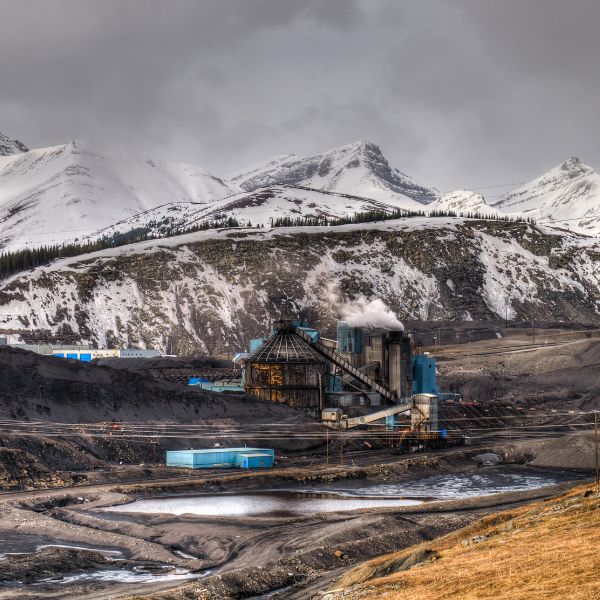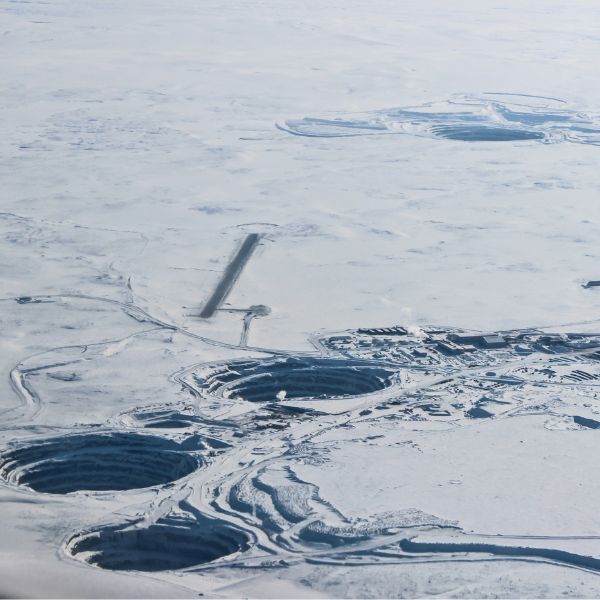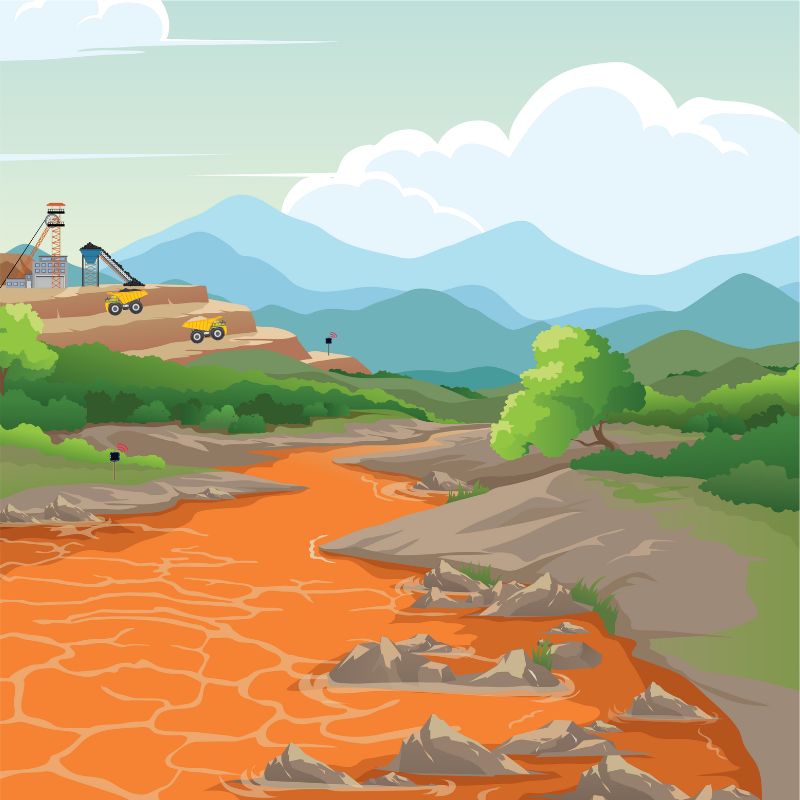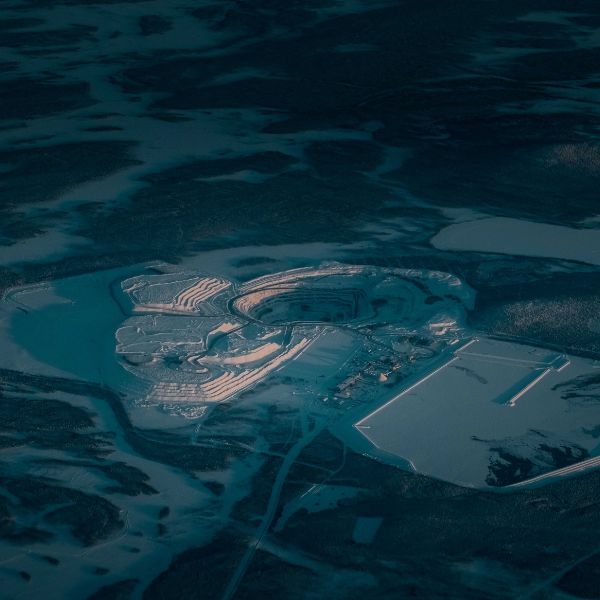Permafrost, the perpetually frozen ground that blankets vast regions of the Arctic and subarctic, is a complex and delicate ecosystem. Its stability is crucial for the environment and human activities, particularly mining, which has numerous operations in these cold, resource-rich areas. However, the accelerating impacts of climate change are causing permafrost to thaw at an alarming rate, presenting significant challenges to mining operations and the surrounding environment.
To effectively address these challenges, precise and continuous monitoring of ground temperatures is essential. By understanding the behavior of permafrost, mining companies can mitigate risks, protect the environment, and ensure the long-term sustainability of their operations. This blog post will explore the critical role of temperature monitoring in cold region mining and how advanced technologies, such as thermistor strings and data loggers, are transforming the industry.
The Permafrost Peril
Permafrost, ground that remains frozen for at least two consecutive years, covers approximately 25% of the Northern Hemisphere (NSIDC, n.d.). It serves as a crucial foundation for infrastructure, including roads, buildings, and pipelines. Unfortunately, the rising global temperatures are causing permafrost to thaw at an unprecedented rate.
The consequences of permafrost thaw are far-reaching. It can lead to ground subsidence, slope instability, and the release of greenhouse gasses trapped within the frozen ground. These impacts not only threaten infrastructure but also disrupt ecosystems and contribute to climate change.

The Impacts of Permafrost Thaw on Mining Operations
The mining industry in permafrost regions faces unique challenges due to the delicate nature of this frozen ground. As global temperatures rise, the impacts of permafrost thaw on mining operations are becoming increasingly pronounced.
- Infrastructure Damage: One of the most significant effects of permafrost thaw is infrastructure damage. Thawing ground can lead to ground subsidence, causing roads, buildings, and equipment to become unstable and eventually collapse (ARCUS, n.d.). This can disrupt mining operations, increase costs, and pose safety risks to workers.
- Environmental Risks: Permafrost thaw also poses significant environmental risks to mining operations. As the ground thaws, it can release contaminants, such as heavy metals and hydrocarbons, into the surrounding environment. These contaminants can pollute water sources, harm wildlife, and degrade soil quality (Christensen, 2024). Additionally, thawing permafrost can release greenhouse gasses, such as methane and carbon dioxide, into the atmosphere, contributing to climate change (Jia, et. al., 2022).
- Operational Challenges: Changes in ground conditions caused by permafrost thaw can also create operational challenges for mining companies. Thawing ground can affect the stability of mine slopes, leading to increased risks of landslides and rockfalls. It can also impact the performance of mining equipment, as heavy machinery can become stuck in thawing ground. These challenges can reduce productivity, increase costs, and create safety hazards for workers.
By understanding the potential impacts of permafrost thaw, mining companies can take proactive steps to mitigate risks and ensure the long-term sustainability of their operations. Precise temperature monitoring is a crucial component of this strategy, as it allows for early detection of permafrost changes and informed decision-making.

The Role of Real-Time Temperature Data in Permafrost Monitoring
Traditional permafrost monitoring methods, such as manual measurements and borehole thermometers, are time-consuming and often provide limited data (GTN-P, n.d.). To address these limitations, advancements in technology have led to the development of efficient and accurate real-time monitoring solutions.
Digital thermistor strings equipped with multiple temperature sensors offer precise ground temperature profiles. Unlike their analog predecessors, digital strings provide higher accuracy, reliability, and flexibility. Coupled with satellite-enabled data loggers, these strings can transmit real-time temperature data to cloud-based platforms. This enables continuous monitoring, rapid data analysis, and informed decision-making without having to send people to collect data, reducing costs and increasing safety.
By leveraging real-time temperature data, mining companies can gain crucial insights into permafrost conditions, allowing for timely responses to changes and effective risk mitigation.
beadedstream’s Permafrost Monitoring Solutions for Cold Region Mining
beadedstream offers a specialized solution for the unique challenges of permafrost monitoring in cold region mining. Our advanced hardware and software system provides critical insights into ground temperature conditions to support informed decision-making and risk mitigation.
Our digital thermistor strings are engineered to withstand the extreme conditions of remote mining sites. Equipped with multiple sensors at varying depths and horizontal distances, they deliver precise temperature profiles to accurately assess permafrost stability and detect early signs of thaw. This data, combined with our satellite-enabled data loggers, is transmitted in real-time to our cloud-based platform, beadedcloud.
By leveraging beadedstream, mining operators can:
- Optimize mine planning and design: Accurately assess permafrost conditions to inform infrastructure placement and operational strategies.
- Mitigate risks: Identify potential hazards such as ground instability and water infiltration, protecting assets and personnel.
- Enhance environmental performance: Monitor permafrost thaw and its impact on the surrounding ecosystem, demonstrating a commitment to sustainable mining practices.
- Comply with regulations: Meet industry standards and government requirements for permafrost monitoring.
With beadedstream, mining companies can confidently navigate the complexities of cold region operations while safeguarding their investments and minimizing environmental impact.

Benefits of Permafrost Monitoring for Mining Companies
Investing in comprehensive permafrost monitoring offers numerous advantages for mining companies operating in cold regions.
- Risk Mitigation: Continuous monitoring of ground temperatures allows for early detection of permafrost thaw, enabling companies to take proactive measures to protect infrastructure and personnel. By identifying areas at risk of ground subsidence, mining companies can reinforce structures, relocate equipment, or implement alternative transportation routes to minimize disruptions. Early detection of permafrost thaw can help prevent the release of contaminants into the environment, protecting water sources and ecosystems.
- Operational Efficiency: Understanding ground conditions helps in determining the optimal placement of heavy equipment, reducing the risk of equipment damage and downtime. Accurate data on permafrost conditions can inform mine design and planning, leading to more efficient and cost-effective operations. By mitigating risks associated with permafrost thaw, mining companies can improve overall productivity and reduce operational costs.
- Compliance and Reporting: Comprehensive permafrost monitoring demonstrates a commitment to environmental protection and helps mining companies comply with regulations. Sharing monitoring data with communities, regulators, and other stakeholders builds trust and enhances the company’s reputation.
By investing in advanced permafrost monitoring technologies, mining companies can not only protect their assets but also contribute to the sustainable development of cold region resources.

Conclusion
Permafrost, a critical component of the Arctic and subarctic landscapes, is undergoing rapid changes due to climate change. For the mining industry operating in these regions, understanding and monitoring permafrost conditions is paramount. By investing in advanced technologies such as thermistor strings, data loggers, and cloud-based platforms, mining companies can effectively monitor ground temperatures, identify potential risks, and make informed decisions to protect their operations and the environment.
The benefits of permafrost monitoring are clear: reduced risks, improved operational efficiency, and enhanced environmental performance. As the world continues to grapple with the impacts of climate change, the mining industry has a responsibility to adopt sustainable practices and minimize its environmental footprint. Precision permafrost monitoring is a crucial step towards achieving this goal.
By embracing innovative technologies and data-driven approaches, mining companies can not only safeguard their operations but also contribute to the preservation of these fragile ecosystems for generations to come.








